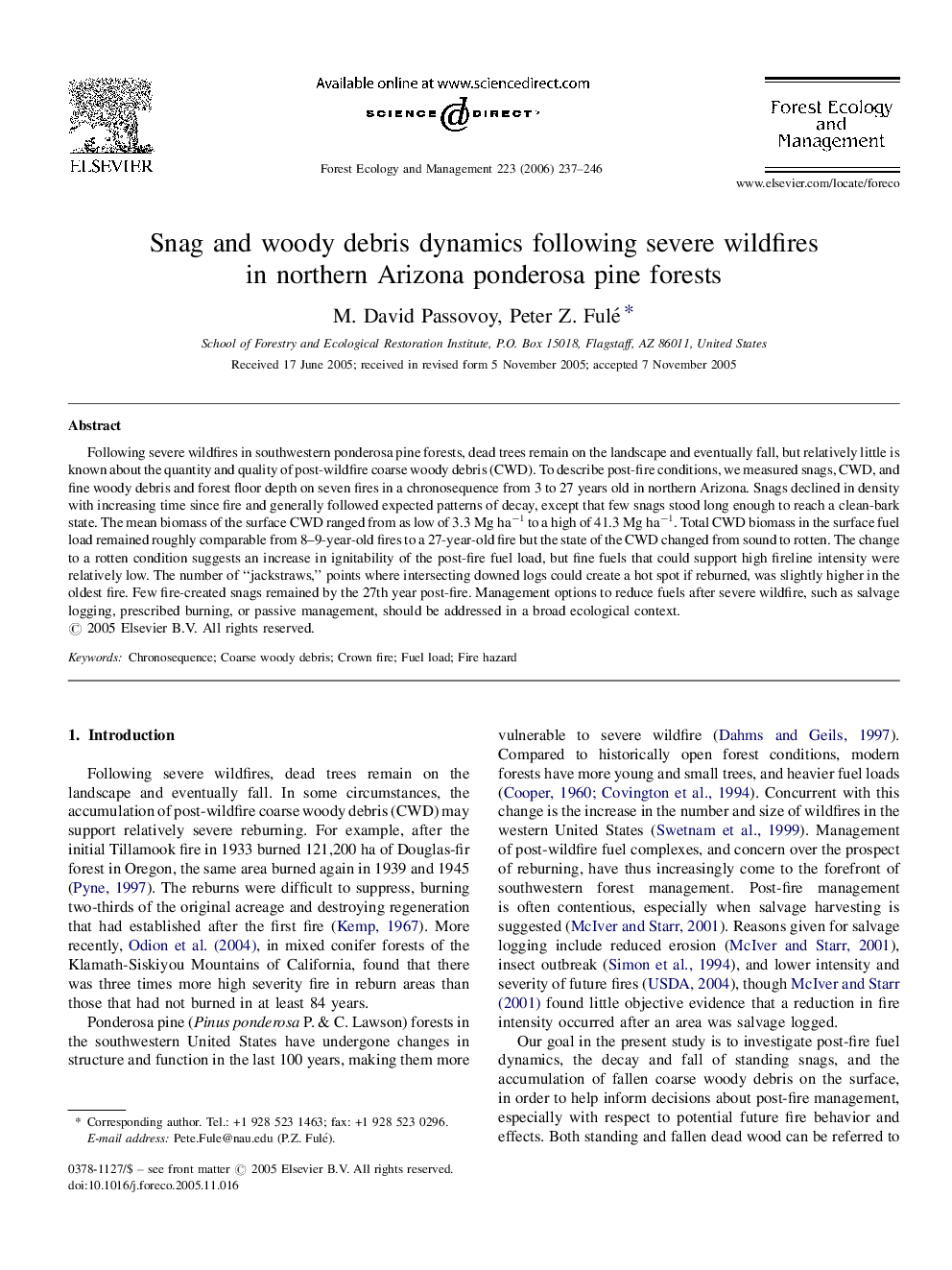| Article ID | Journal | Published Year | Pages | File Type |
|---|---|---|---|---|
| 90592 | Forest Ecology and Management | 2006 | 10 Pages |
Following severe wildfires in southwestern ponderosa pine forests, dead trees remain on the landscape and eventually fall, but relatively little is known about the quantity and quality of post-wildfire coarse woody debris (CWD). To describe post-fire conditions, we measured snags, CWD, and fine woody debris and forest floor depth on seven fires in a chronosequence from 3 to 27 years old in northern Arizona. Snags declined in density with increasing time since fire and generally followed expected patterns of decay, except that few snags stood long enough to reach a clean-bark state. The mean biomass of the surface CWD ranged from as low of 3.3 Mg ha−1 to a high of 41.3 Mg ha−1. Total CWD biomass in the surface fuel load remained roughly comparable from 8–9-year-old fires to a 27-year-old fire but the state of the CWD changed from sound to rotten. The change to a rotten condition suggests an increase in ignitability of the post-fire fuel load, but fine fuels that could support high fireline intensity were relatively low. The number of “jackstraws,” points where intersecting downed logs could create a hot spot if reburned, was slightly higher in the oldest fire. Few fire-created snags remained by the 27th year post-fire. Management options to reduce fuels after severe wildfire, such as salvage logging, prescribed burning, or passive management, should be addressed in a broad ecological context.
